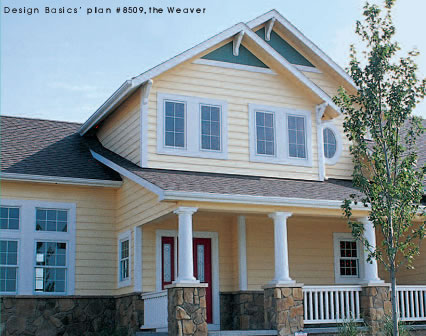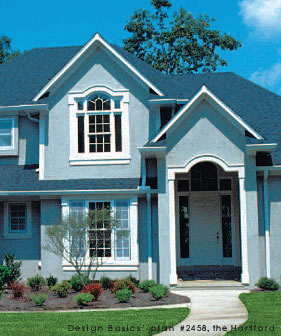 Q: What are the most common mistakes homeowners make when choosing exterior paint colors?
Q: What are the most common mistakes homeowners make when choosing exterior paint colors?
A: Assuming that a colorful and imaginative color scheme will cost a great deal more for product and labor. Unless the scheme is a “painted lady” with numerous colors, this is rarely the case.
Accenting unattractive elements such as gutters, downspouts, a protruding garage door, air conditioning units, unevenly placed windows, etc.
Ignoring neighboring houses: your color scheme choice should not clash with the neighbor’s house – it’s a lose-lose situation. Choose a scheme that blends with the neighborhood or stands out in a subtle, unobtrusive manner.
Forgetting landscaping. Consider flowering shrubs, flower gardens and trees that change color when selecting colors to ensure compatibility. Heavily wooded lots make colors look darker (due to shade) and may camouflage homes. Greens are not a good choice in this situation.
Q: What opportunities do homeowners commonly miss when selecting and placing colors on their homes’ exteriors?
A: Color makes a first impression and can enhance curb appeal and even resale value. A creative scheme (versus a typical white exterior) could be an opportunity to make that first impression.
Don’t overlook interesting architectural detailing; it can often sparkle with a contrasting or accent color.
Be observant. Drive through various neighborhoods, established and new, to see color in action. Make note of appealing color schemes and consider adapting them to your own home.
Assuming no structural work is needed, color/paint is the most cost effective approach to changing the appearance of a home. Define the entryway by using color as a “Welcome” sign.
Windows are an opportunity: they give character to a house. Outlining them lends crispness to the color scheme.
 Q: Are there any rules of thumb about color placement on a home?
Q: Are there any rules of thumb about color placement on a home?
A: Consider the colors that can’t change (elements such as brick, slate and stone accents and roofing shingles) and use these elements as color resources because there are numerous shades and hues in most of these building materials. For example, a charcoal gray shingle could have flecks of gray-green or gray-blue that could be found on a paint color strip or incorporated into the color scheme.
Examine color samples outdoors, at various angles and at different times of the day. Consider buying small quantities of desired colors and paint a section of the house where body, trim and accent colors can be viewed together.
Pay attention to geography, specifically the intensity of the sun. Intense sun washes out colors, so brighter colors are suitable in Sunbelt areas but might stand out like a sore thumb in northern locations.
 Q: Why are white and light colors so popular?
Q: Why are white and light colors so popular?
A: Traditionally, white and light colors were perceived to be safe choices. However, as consumers have gained more confidence with color, and as a broader spectrum of colors has been made available for exterior use, those “traditional”approaches are changing. Today, tinted neutrals that play off landscaping and other building materials are increasingly being used, as are mid-tone values of neutrals.


